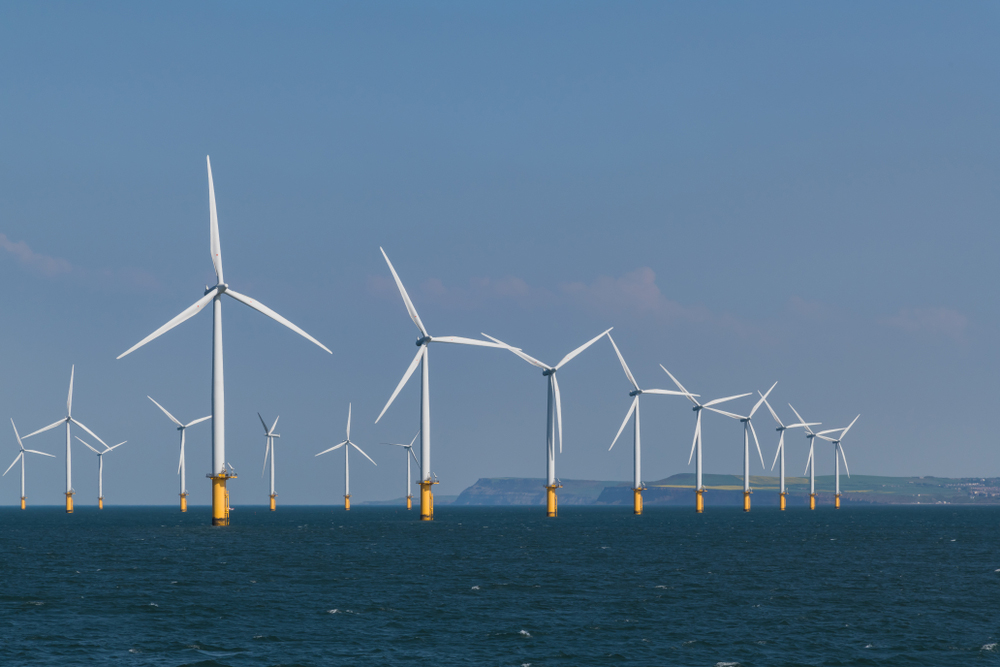Historically, offshore wind developers have relied nearly entirely on exporting expertise from Europe to fill open vacancies in developing markets. But exponential growth expected from emerging markets such as North America, Taiwan, and Japan will put a squeeze on talent.
Last year, the Global Wind Energy Council estimated 3.3 million direct offshore wind energy supply chain jobs could be created by 2025 based on its annual growth estimates. Indeed, the U.K.’s wind industry has grown a staggering 16 percent year on year, and is set to employ more than 97,000 people by 2030. Similarly, North America’s recent target to install 30 GW by 2030 is expected to create nearly 80,000 jobs.
Although competitive salaries, attractive benefits packages, and well-defined career prospects will attract candidates to the sector, this can only go so far. Rather, a refreshed talent strategy is required to ensure projects are not unduly delayed by a shortage of skills. What that strategy looks like will ultimately vary by geography; however, there are several universal considerations to be made.

The Geographics of Recruitment Need a Shake-Up
If the global pandemic taught us anything, it is that many jobs do not need to be executed in a specific location all the time, and we need to upskill local candidates to serve in emerging markets.
Most workers have an interest in relocating, often allured by the idea of an accelerated career path. However, for many, the practicalities of family life and the usual visa implications create a challenge in turning this aspiration into actuality. If we remove the obstacles of location and time zones, many more candidates for niche roles suddenly become available. Rather than requiring complete relocation, candidates could be given the option of the same role with occasional international travel.
A further consideration is keeping recruitment trends in mind. Year after year, Airswift’s Global Energy Talent Index (GETI) finds that Europe is the preferred destination for relocation within the renewables sector. Instead of basing a role on location, companies may find it easier to advertise the role as being based in Europe and provide assistance to relocate global candidates.
Although European fabrication will continue to be a major export, emerging markets, particularly those in Asia, are increasingly establishing their own supply chains and recruitment needs. The global pandemic gave us a glimpse of what life will be like if we do not source more of the workforce locally to meet those needs — in short, this picture is full of project delays. Successful recruitment of client representatives and quality control roles from competent local content will be vital for ensuring high-quality fabrication from hotspots such as China, Taiwan, and Korea.
Similarly, as offshore wind’s footprint expands globally, it is essential that companies upskill local workforces to ensure global standards for safety and quality are adhered to without the need to import this expertise from elsewhere. Creating a heightened safety culture is a substantial undertaking that will need careful and consistent implementation over a long period of time.

The Technology Sector is a Peer
There is an increasing overlap in skills between the renewables and technology sectors. Expertise in SCADA systems, cyber security, and IT are all highly sought after by offshore wind. As such, the technology sector is a peer and a rival for talent from which the renewables sector often faces stiff competition.
While remuneration and benefits packages are becoming more comparable, one major selling point of the renewables sector is typical contract lengths. Most offshore wind projects take several years to design, build, and commission, which presents the opportunity for contractors to work on one project and with one team for an extended period. This not only offers job security, but also a depth of experience that is not so readily achieved if working on several shorter projects.
Being Open to Different Education and Experience
It remains quite common to see highly competent candidates sifted out of the interview pile because they do not meet specific education or experience requirements considered essential to the role. And the same happens in reverse, too — well-qualified candidates are put off applying because they don’t have a master’s degree in renewable energy or sustainable engineering, for example, despite having worked in the sector for the best part of a decade.
The industry regularly talks about the potential to bridge the skills gap by filling roles with candidates from adjacent sectors such as technology, oil and gas, and power, but we won’t be able to make this happen at scale if we don’t become more open minded about the backgrounds of candidates that we interview. Every job description should be thorough to ensure everything that is labeled essential is indeed essential and could not possibly be achieved any other way.
Offer Certification and Training to Suitable Candidates
Many candidates from adjacent sectors have a wealth of complementary skills that would make them an ideal fit for offshore wind but naturally do not have the right Global Wind Organization (GWO) certificates to do so. The package cost for all five mandatory safety courses is more than a thousand pounds, which is prohibitive to some would-be applicants.

Industry initiatives that ease the burden of certification on the worker are welcomed. For example, GWO’s Safety Training Access program allows qualifying workers with existing certification to follow a fast-track route rather than undertake the full mandatory training. However, offering certification as part of all appropriate recruitment drives, and particularly for positions that are renumerated via payroll, would significantly boost the number of potential candidates applying.
Structural engineering roles are another good example. The principles for designing an oil and gas jacket foundation are not all that dissimilar to those for an offshore substation or wind-turbine generator (WTG) for an offshore wind project. Recruits may need support with learning new software or adhering to specific industry or geographic standards, but at the core, structural engineering is still structural engineering.
Across the renewables industry, creating an ample pipeline of talent remains a work in progress, with the pressure set to increase as markets grow in line with global ambitions. Hiring managers will need to push on every open door to attract candidates into the sector and evolve their hiring strategies to support efforts to do so.
























